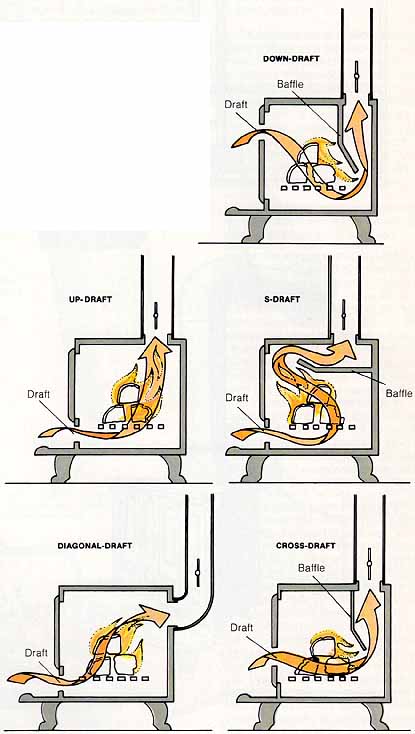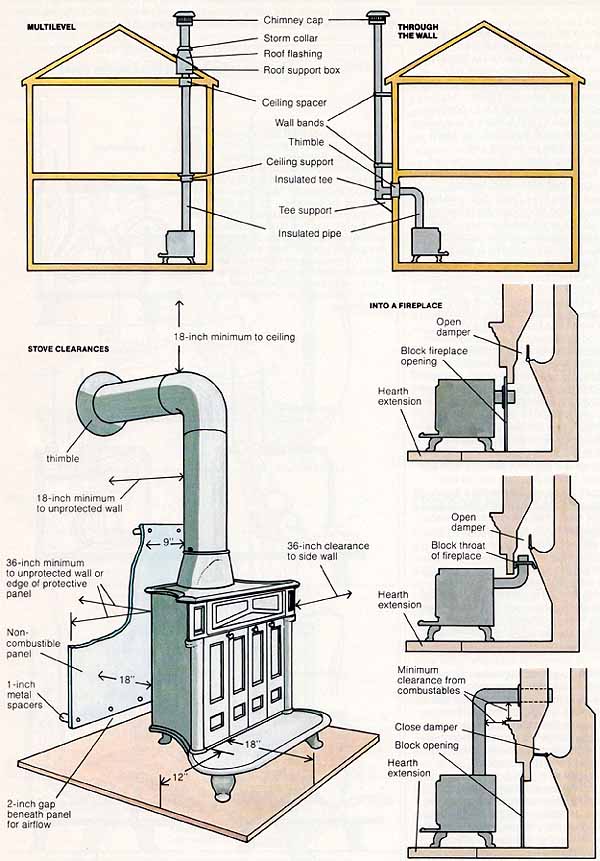If you haven’t yet bought a stove, an air tight is the obvious choice. It can heat your entire house to a toasty temperature, cost-effectively (unless your house is poorly insulated, in which case your heat will go up in smoke); a non- airtight stove, although it may heat your whole house or just a room or two, will burn more wood and consume it less efficiently than an airtight one.
But whatever your choice, you can get most of the information you need at any store that sells wood-burning stoves. Here are a few things to keep in mind. A good wood-burning stove may last 20, 30, or 40 years, or even more; but few are guaranteed for longer than 5 years. If you are seriously considering buying a stove, choose your manufacturer with care.
Although some unapproved stoves are quite good, most of the best ones will bear a seal, sign or tag indicating that they have been tested and approved by a reputable independent testing laboratory or other organization. Particularly with an airtight stove, but al so to some degree with a non-airtight one, the door should fit in a way that encourages the unit’s maximum efficiency. Look at the unit you are thinking of buying. Touch it. If you are looking at a cast-iron stove, make sure that the seams are all well-sealed, and that the castings are relatively smooth, with few uneven places or rough bumps and gouges. If you are examining a steel stove, determine that there are no gaps on the welds that will turn into air leaks.
Whether made of steel or cast iron, the walls of a wood-burning stove should be inch or slightly thicker. If the walls are much thinner, steel stoves may warp and bend under prolonged intense heat, and cast iron will burn out more quickly. However, if the walls are much thicker, they may absorb more heat than necessary and thus retard the unit’s ability to heat a room.
• Where to place your stove: Some rooms make more appropriate wood- stove sites than others. The ideal site is a room that is central, close to the other rooms, and low-ceilinged. In general, the more open and accessible the stove- heat is to the other rooms, the better the convection throughout the entire house will be.
If you have a sprawling ranch-style house, you may want to consider putting a stove at either end of the house. If you have a two-story house, you might want to put it near the stairwell to help heat the upstairs rooms. You can even install floor vents if you want to. You should not put your stove in the basement, (unless that is what you want to heat) even though heat does rise. The radiant heat from the stove will stay in the basement and be of little use to your upstairs living spaces. Within a room, it is better to keep it away from windows, so that you do not lose the heat through the glass. If you put it by your existing fireplace, you will want to block the fireplace opening
Next: Installation of Wood Stoves

